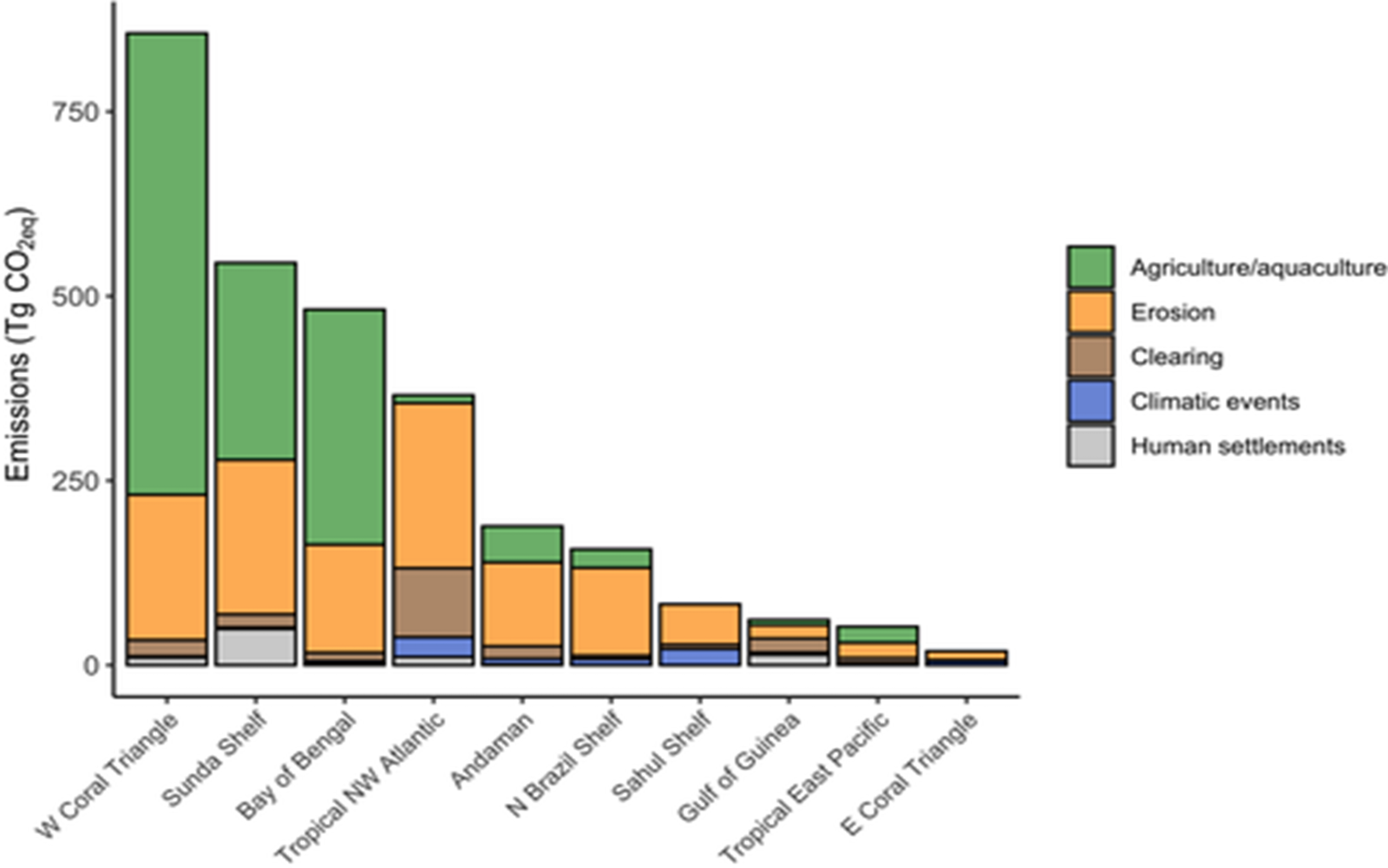February 28, 2021 | Global Change Biology | Source |
Introduction: Mangroves significantly contribute to global climate mitigation by storing substantial carbon, yet their continuous loss poses major challenges. An international research team led by the Australian Rivers Institute at Griffith University, developed a comprehensive global model to project future carbon emissions resulting from mangrove deforestation. Utilizing datasets on carbon storage, mangrove distribution, deforestation rates, and land-use change drivers, the model assesses emissions under business-as-usual (BAU) scenarios.
Key findings: The study projects up to 3,392 teragram (Tg) COâ‚‚ equivalent emissions from mangrove loss by 2100, accounting for both direct emissions and foregone soil carbon sequestration. Emission hotspots—led by the West Coral Triangle, Sunda Shelf, and Bay of Bengal—are mainly driven by agricultural and aquacultural expansion. Other major contributors include erosion in North Brazil and the Andaman coast, and storm damage in the Caribbean. The researchers identified five proximate drivers of mangrove loss: (a) conversion to commodities, (b) coastal erosion, (c) clearing, (d) extreme climatic events, and (e) conversion to human settlements—providing a comprehensive analysis of emission causes. Sensitivity analyses confirmed that while total emission volumes vary with input data, the spatial distribution of hotspots remains robust. The model was most sensitive to deforestation rates, suggesting emissions could decline if current slowdowns persist. The study proposes actionable, site-specific interventions such as improving hydrological connectivity and stabilizing coasts in the Tropical Northwest Atlantic. Integrating such strategies into national climate policies and carbon markets is essential to mitigate emissions and enhance long-term conservation outcomes.

Figure | Cumulative CO2 eq emissions (Tg) by the end of the century (2010– 2100) attributed to the proximate drivers of mangrove loss for the marine provinces ranked in the top ten for future CO2 emissions.





